Use these tips to grow basil in your garden. You will also find tips for harvesting basil and ways to use it and multiple ways to preserve fresh basil leaves.
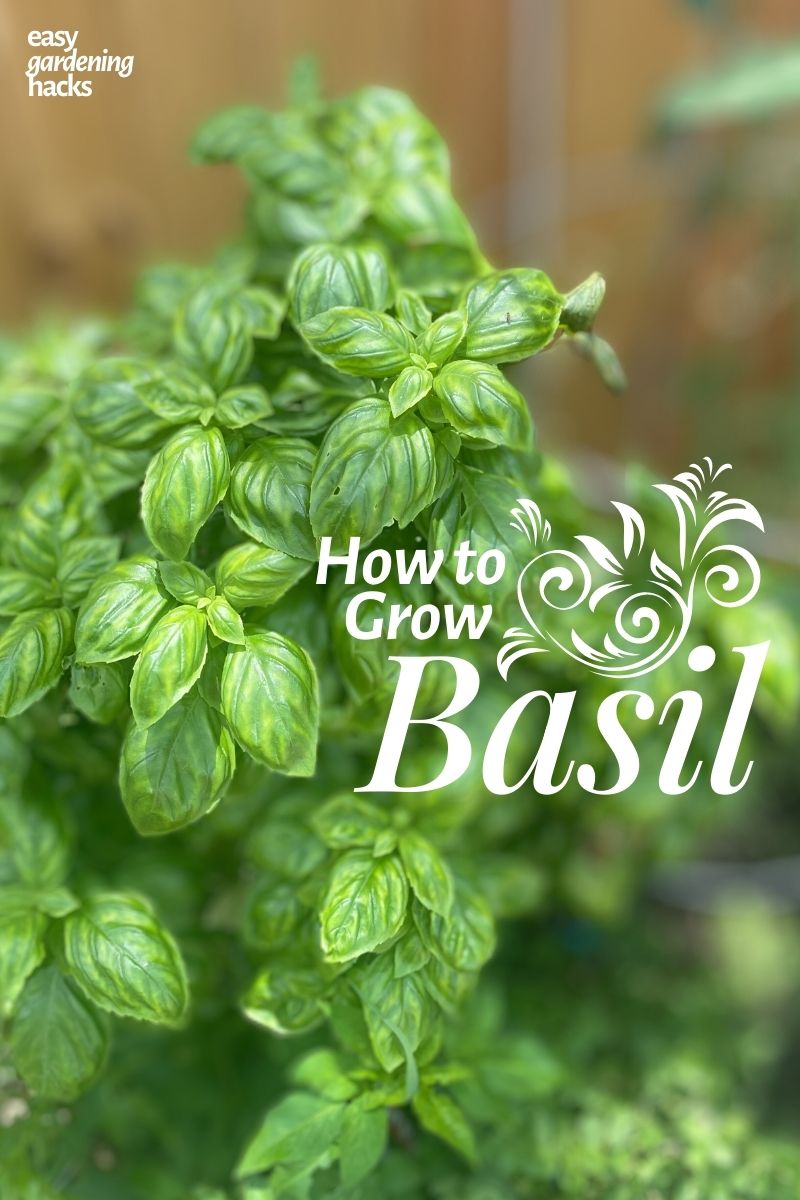
Basil is a wonderful herb to grow because it is so versatile, you can use it in so many dishes and it can be grown in a small pot in the window or as a large patch in your family garden.
First off, basil has a very unique and appealing smell whether it is fresh or simmering in your favorite recipe. I am going to cover the basics of how to grow, and harvest, and some of the less-known uses for this indispensable garden addition. There is a lot of information so let’s get right into it.
Of course, it is delicious to cook with but did you also know that basil has many benefits?
Health Benefits of Basil
- It is good for skin health.
- Basil boosts digestion.
- It can help in lowering blood pressure.
- Basil aids in detoxifying the body.
- It can help reduce blood glucose.
- Basil may lower your cholesterol level.
- It has antimicrobial and antibacterial properties.
- Contains vitamins, minerals, and antioxidants such as lutein and beta-carotene.
Now, how to get this amazing plant to grow isn’t that difficult. Basil doesn’t require a lot of babying and will often do well even when left to grow wild on its own but here are some tips to make the most of it from seed to harvest.
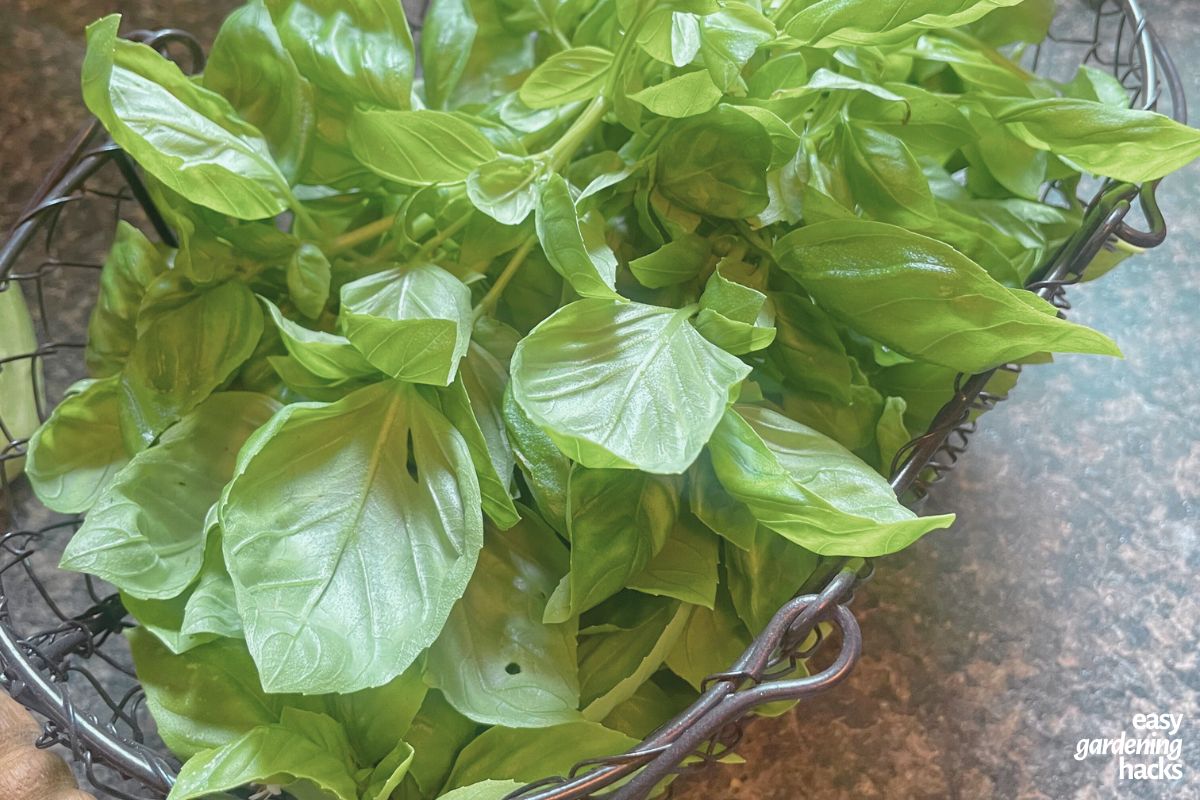
How to Grow Basil
You can grow basil from seed or start with plants from a nursery or home improvement store. Basil prefers warm weather, tolerates heat well, and prefers moist well-drained soil. If you are planting seeds you can directly sow after your last frost date, once the ground has warmed.
Or you can start basil seeds indoors (or in a cold frame) 4-6 weeks before you want to plant them in the ground.
What type of soil is best for growing basil?
Your best bet is soil with a lot of organic matter mixed in like manure. Mulch around the plants when they are 6” tall or so to help retain soil and moisture.
How much sun do bail plants need?
Be sure to give basil plants full sun. The plants do best with about 6-8 hours a day of full sun. They will even thrive in a sunny window indoors.
How much water do basil plants need?
Needs to be watered regularly and deep, not just surface watering. Mulch around the base of plants to help retain moisture.
What companion plants grow well with basil?
It does well with companion plants like marigolds, potatoes, cilantro, root vegetables, borage, oregano, and parsley. Tomatoes love basil nearby. Basil naturally repels pests like the asparagus beetle, tomato hornworm, carrot fly, mosquitoes, and flies while attracting important pollinators like bees and butterflies to your garden.
A pizza garden is also a great idea for a large container garden. In a pizza garden, you grow basil, tomatoes, oregano, onions, and peppers. A large galvanized tub works well for a big overflowing herb garden.
There are thought to be somewhere between 50 to 150 different varieties of Basil. The most popular and in my opinion, best basil for cooking is Sweet Basil. But there are many different types of basil, so you may want to experiment with different varieties.
Basil Plant Varieties:
- Sweet Basil
- Purple Basil
- Lemon Basil
- Genovese Basil
- Thai Sweet Basil
- Lettuce Leaf Basil
- Dark Opal Basil
- Licorice Basil
- Cinnamon Basil
- French Basil
- Lime Basil
- Lettuce Basil
- Green Ruffles
- Thai Basil
How to Harvest Basil
You want to harvest your basil often, before flowers begin to sprout, when you wait this long the plant’s energy goes to the flowers rather than growing new leaves. The bees and other pollinators will love you but you won’t have as much to harvest.
Basil plants that have reached about 6″ high and have multiple sets of leaves are ready to be harvested.
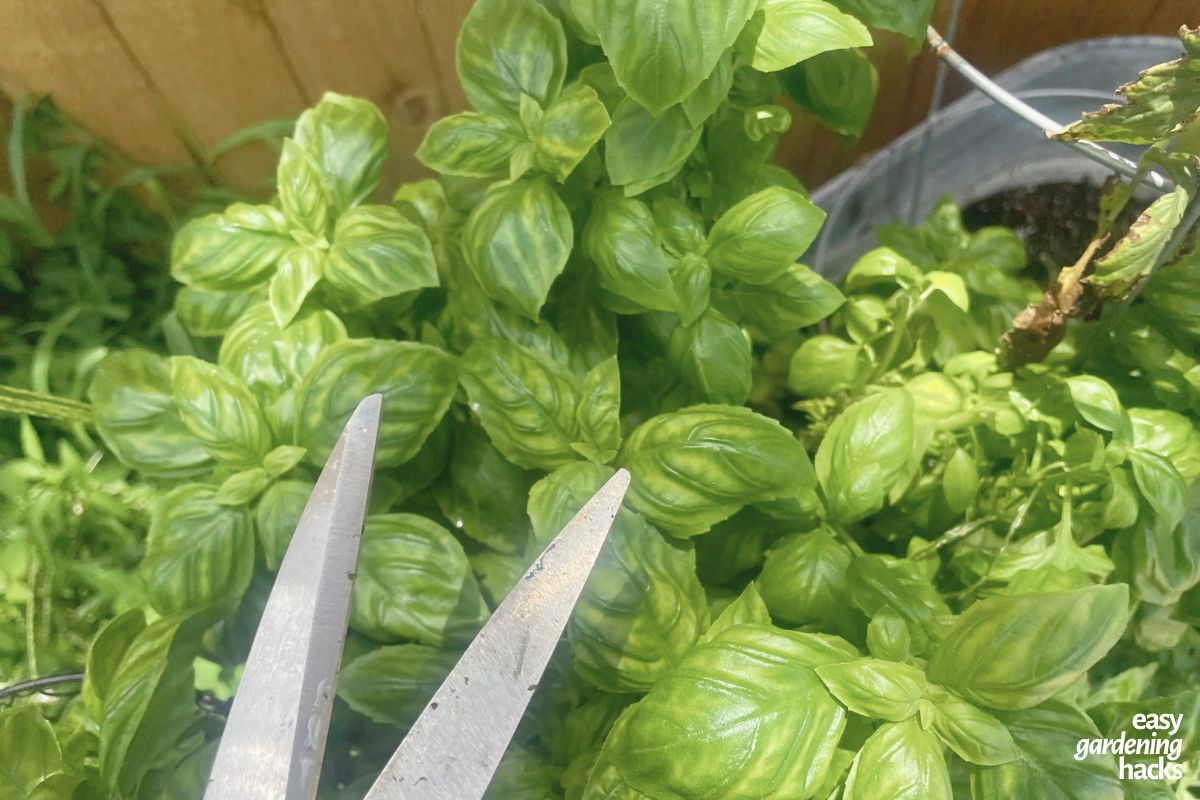
You can harvest it with a pair of garden shears or by hand simply by cutting or breaking off what you need, right above the next set of leaves you want to leave on the plant. As you harvest from the initial growth it will encourage the basil to spread out and get bushy.
You can see this one went far too long without being harvested:
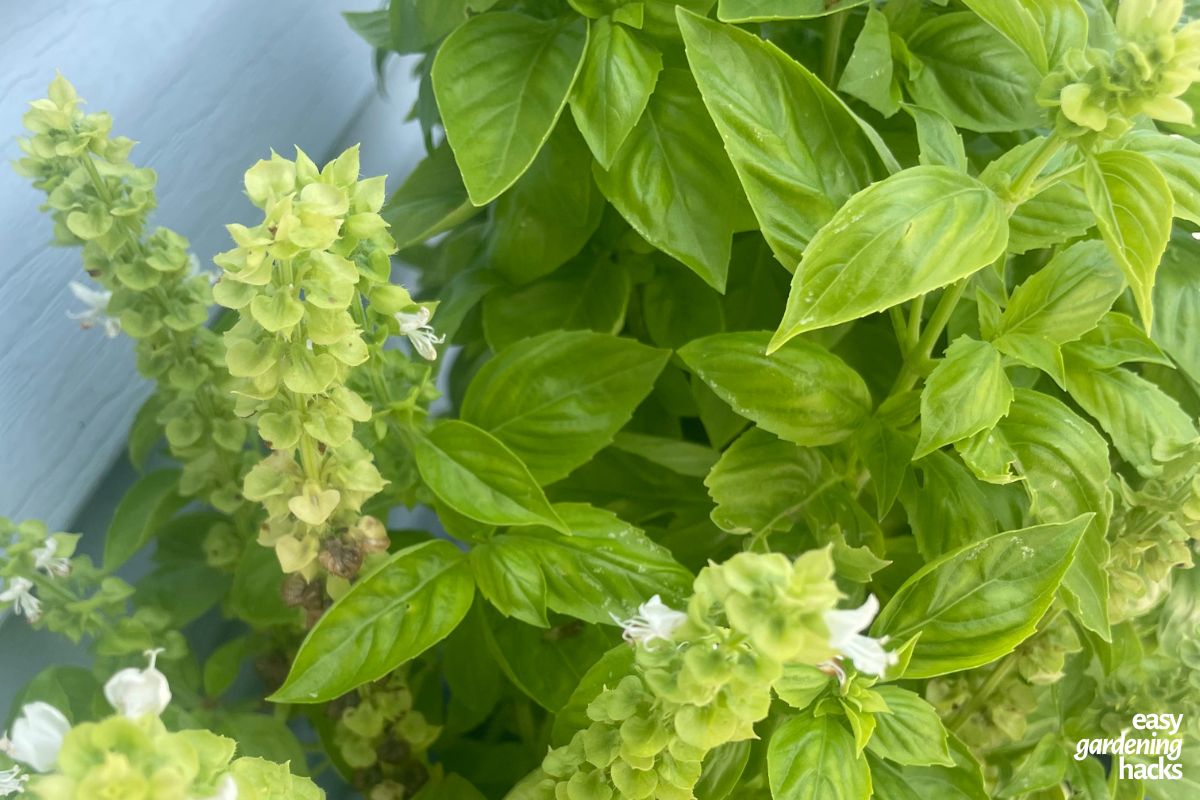
How to Preserve Fresh Basil
There are many ways to preserve basil. Line drying the basil is the simplest way to dry this herb. All you need to do is is to hang bunches of basil from a line like I did here:

Your kitchen will smell wonderful as the basil dries! You can also use your dehydrator, oven, microwave, or even air fryer to dry basil, crush it up, and put it in an airtight container to have dried basil on hand. Here are more tips on drying herbs.
You can preserve basil in oil. You just layer fresh basil leaves in olive oil with sea salt. Basil preserved in oil can be stored in the refrigerator for up to a year.
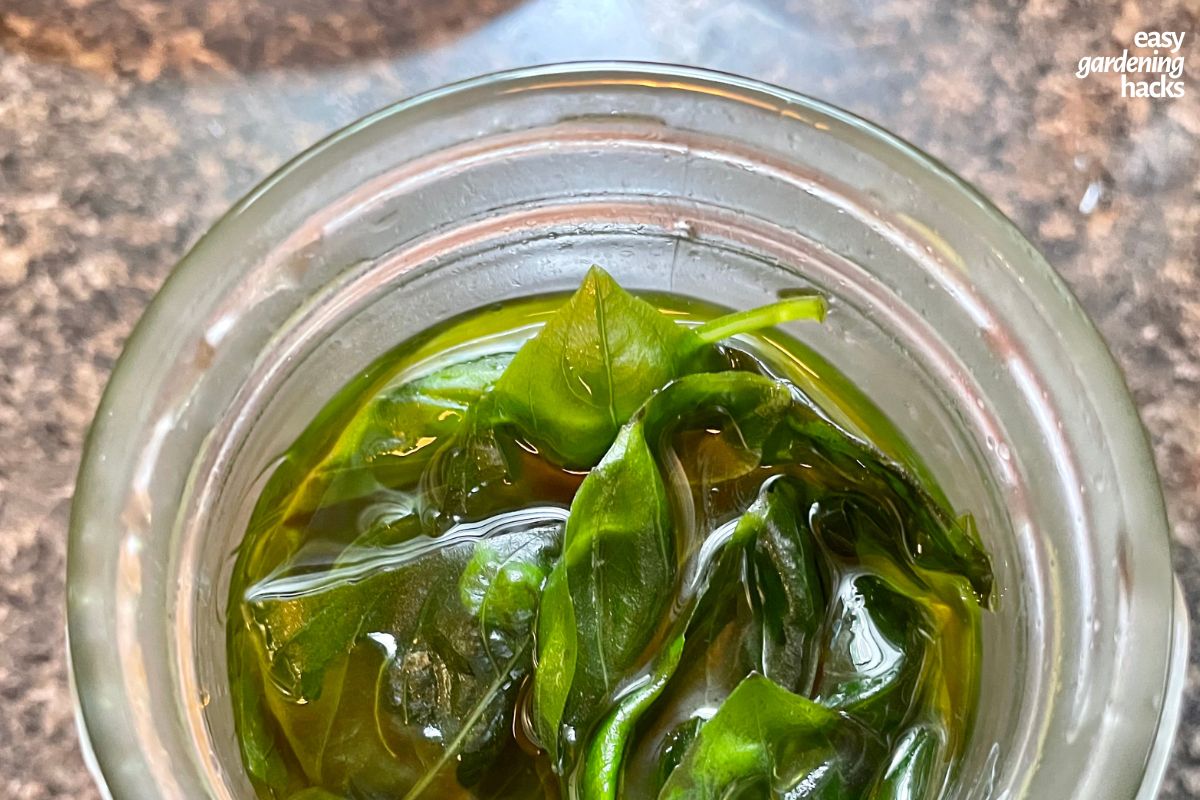
You can freeze basil to preserve it and save time with meal prep on busy nights by adding frozen basil cubes to soups. Chop the basil leaves and measure out a teaspoon or two into ice cube trays, fill with water or oil, and freeze. When solid pop out and store in a plastic freezer bag. Use a cube or two as needed in sauces and other recipes. Here are more tips for freezing herbs.
How to Save Basil Seeds
At the end of your growing season allow your plant to go to flower, let these flowers turn into seed heads which will then brown. Now you can clip the stem off and roll the seed heads around in your hand to remove individual ones and store them for future use.
Other Ways to Use Basil
Health and Beauty:
- Crush basil leaves and use them with hot facial steam to help relieve headaches.
- Add leaves to a hot bath for a relaxing aromatherapy.
- Chew up a leaf and apply it to bug bites or stings to help relieve the pain and draw venom out.
- Fresh basil is great for tinctures and oil basil for many medicinal benefits including ear infections, leveling blood sugar, or soothing stomach upsets.
Household and Garden:
- Mix crushed basil leaves with water and vinegar for a naturally antimicrobial spray.
- Fresh basil in your garden acts as a natural mosquito repellent, rub a few leaves on your arms and legs next time you are out in the evening and give it a try.
Chickens:
If you raise chickens, you can feed them basil. Basil promotes mucus membrane and respiratory system health and can be added to their feed. I toss in a handful every other bag of feed or so to help bolster their health. In the winter when my plants are not producing much I use a jar of the dried herb.
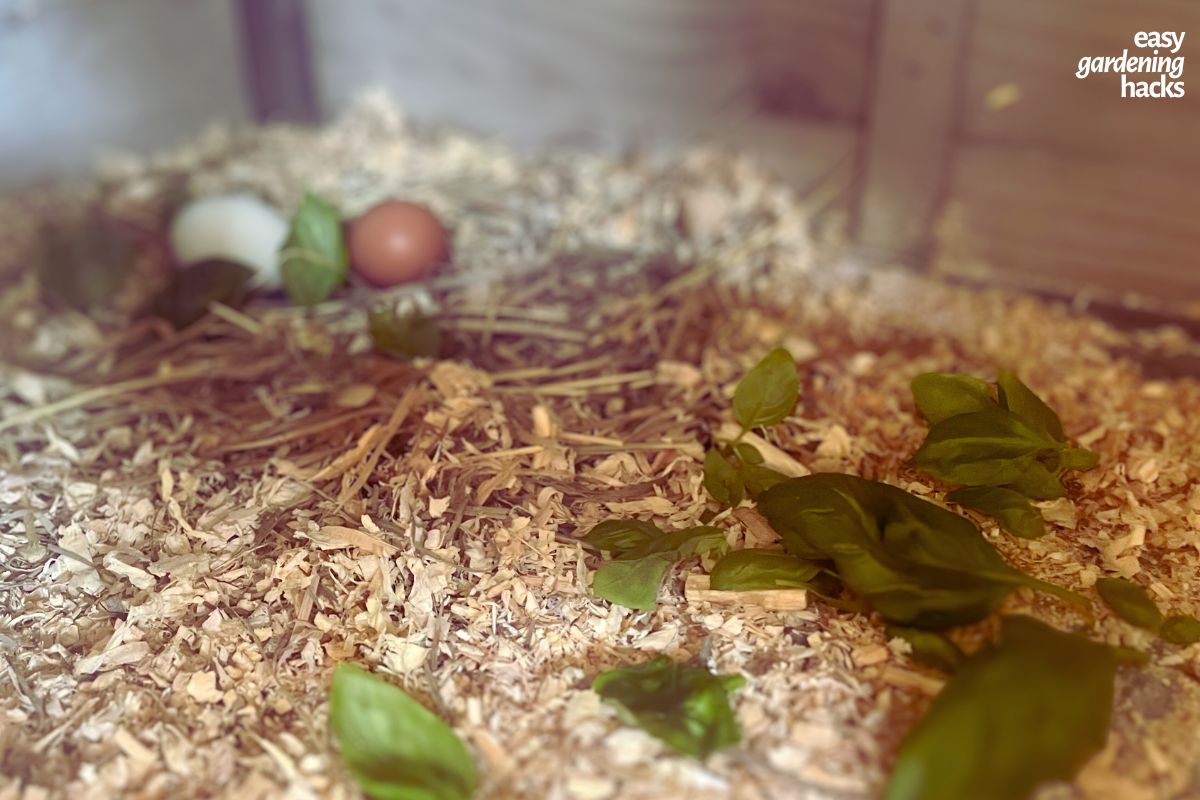
Basil can also be tossed fresh or dried into the chicken coop and in the nesting boxes to improve the smell and act as aromatherapy to encourage hens to lay. It is also a good deterrent for pests like lice, mites, and rats.
Basil has so many uses and it is easy to preserve, so you may want to grow several plants in your garden!
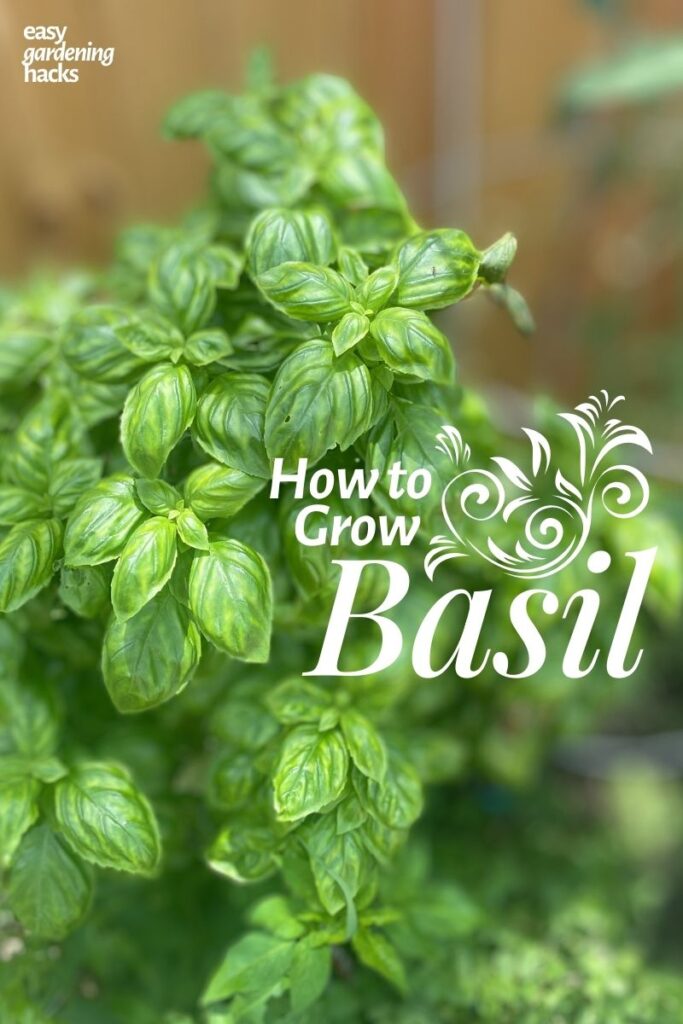
Leave a Reply